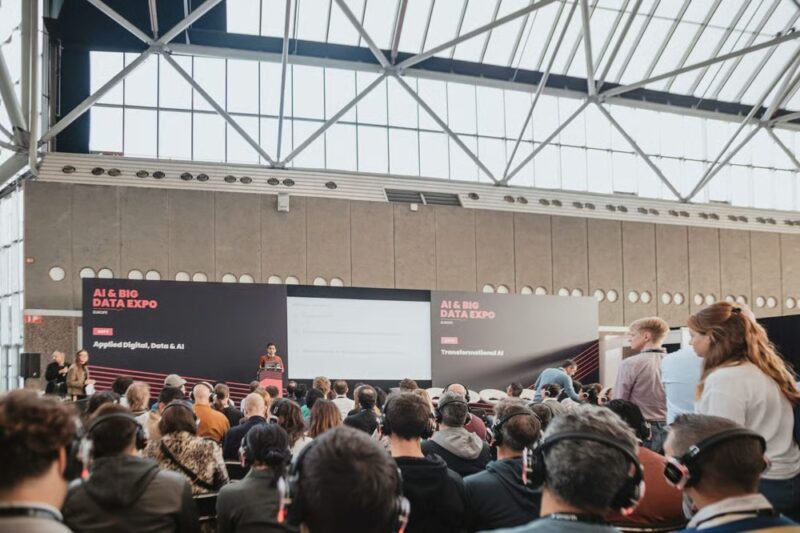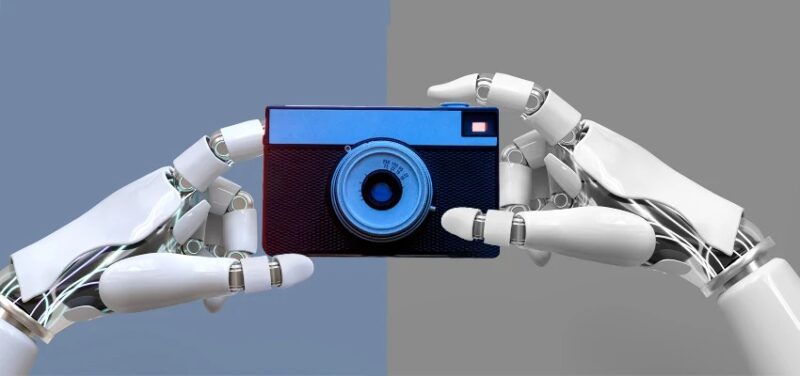Event photography has entered a new era. Artificial intelligence not only helps photographers edit faster; It completely changes the way you capture, process and share photos.
In 2025, the decisive shift will be precision automation: AI will now handle everything from automatic lighting correction and instant background removal to emotion detection and real-time lighting creation.
The result is that event streaming is more personalized, efficient and interactive than ever before.
Smarter Cameras and Instant Curation

Modern cameras are equipped with sensors that can recognize facial expressions, gestures, and even the emotional tone of a group photo.
Instead of taking thousands of random shots, photographers can now rely on AI to prioritize the best moments, laughs, applause, or key expressions that the client values the most.
For example, AI-powered autofocus systems track not only faces, but also the relationships between subjects.
At a wedding, the system can recognize the parents of the couple or the wedding party and put them in the foreground of the composition. The result: more emotionally resonant images and fewer wasted moments.
Seriously, AI processing systems then filter and label the images in real time and automatically select the top 10% of images based on clarity, emotion, and image quality. It dramatically reduces the post-event editing workload and accelerates delivery times.
Real-Time Editing and Intelligent Enhancement
One of the most practical advances in 2025 is AI-driven live editing. Connected cameras and apps now apply intelligent exposure stabilization skin smoothing and lighting correction while taking photos. Guess what?
Photographers can review half-finished images on site, thus reducing post-production time.
Generative AI has also matured into a reliable assistant. It can reconstruct overexposed backgrounds, enhance low-light images without visible noise, and even regenerate partially blocked faces using reference frames. These tools don’t replace creative editing but rather allow photographers to focus more on storytelling than technical cleanup.
For instance, advanced models now distinguish between natural and artificial lighting in indoor venues and can adjust color temperatures dynamically.
This ensures consistent tones across an entire album, even when lighting conditions shift dramatically during the event.
Interactive Guest Experiences
Perhaps AI’s greatest contribution to event photography is its ability to combine fun with technology. Participants expect not only selfies but also interactive and shareable experiences. That’s where Photo booth software has become central.
Modern AI-powered photo booth systems can automatically recognize guests create unique animations and even make short video loops or GIFs in seconds.
TouchPix, for instance, integrates machine learning to adjust framing, apply real-time effects, and instantly deliver branded content via QR code or email.
Guests no longer wait days for galleries—they leave with high-quality keepsakes that also serve as organic marketing tools for event organizers.
In 2025, booths go far beyond static backgrounds. With depth mapping and virtual staging, AI can place guests into dynamic 3D scenes, from virtual concert stages to cinematic landscapes, without the need for a green screen.
AI lighting ensures shadows and highlights match the virtual environment, creating seamless composites that look authentic and professional.
Predictive Highlights and Automated Storytelling

At large events like conferences or festivals, AI doesn’t just capture; it analyzes. Intelligent systems identify peak engagement moments, like key applause points, standing ovations, or first dances, and automatically compile highlight reels.
These AI editors use contextual cues such as crowd energy, movement density, and audio spikes to predict which moments matter most.
This predictive storytelling changes how clients receive their event coverage. Instead of raw folders with thousands of images, they receive curated visual narratives, complete with suggested captions and layouts for social sharing.
Even corporate clients benefit: AI can classify images such as “networking,” “keynote,” or “audience reaction,” making it easy for marketing teams to locate assets aligned with their messaging goals.
Ethical Editing and Authentic Representation
While AI offers immense creative flexibility, it also introduces new questions about authenticity. Over-editing and synthetic enhancements risk distorting memories.
In response, the industry in 2025 is leaning toward transparency features.
Many professional photographers now tag images with AI metadata, indicating whether any generative adjustments were applied.
Clients increasingly appreciate this honesty, preferring subtle enhancements that preserve the integrity of the moment.
AI tools now include ethical settings that limit facial reshaping or prevent unrealistic background generation, ensuring visual truthfulness.
Event Analytics and Personalized Delivery
AI also extends its influence beyond photography. By analyzing guest interactions and photo engagement data, systems can generate valuable analytics.
Organizers learn which areas of the event received the most attention or which branding backdrops drew the highest participation.
This data feeds back into event planning, helping organizers refine future layouts, lighting setups, and entertainment options.
AI-powered dashboards visualize engagement rates by time, booth, or activity type.
Personalized delivery platforms take it even further. Each guest can now receive a customized gallery featuring only their own photos, identified through facial recognition with privacy safeguards.
Links are automatically generated and delivered securely, often within minutes after the event ends.
The New Role of the Photographer

With AI handling technical precision, the photographer’s role in 2025 has shifted toward direction, creativity, and human connection.
Professionals spend more time engaging with guests, capturing genuine emotions, and crafting cohesive visual stories.
Rather than eliminating jobs, AI amplifies artistic control. It automates repetitive work—tagging, cropping, sorting—so photographers can deliver projects faster and with more emotional depth.
Those who integrate AI workflows report higher client satisfaction and stronger referral rates.
The profession itself has evolved to include “AI photography specialists”, experts who fine-tune algorithms for different event types.
From lighting presets for corporate venues to crowd detection parameters for music festivals, this new expertise defines competitive differentiation in the industry.
Cost Efficiency and Accessibility
Artificial intelligence has also lowered barriers to entry… Small studios and freelancers can now achieve professional results without having to make huge investments in editing teams or studio equipment.
You know what? Real-time processing reduces storage requirements and shortens working hours, making premium event photography accessible to small businesses, schools, and clients.
Tools such as cloud-based editing workflows and intelligent gallery management platforms mean response times have been reduced from weeks to hours.
The democratization of these devices ensures that even local photographers can compete with the big production houses.
What Lies Ahead
By 2025, artificial intelligence in event photography will no longer be a futuristic fad; This is common practice. Guess what?
From adaptive cameras to predictive editing, automation now supports every stage of the workflow. The tangible benefit can be measured: faster delivery, better image quality, and more interactive guest engagement.
In the next phase, artificial intelligence, augmented reality(AR), and tactile feedback are likely to be mixed so that guests can relive the moments of the events in an immersive 3D environment. For photographers, this means expanding from photography to experimenting with design.
In short, AI has not replaced the art of photography; He redefined its options. The new industry standard combines machine precision and human creativity, ensuring that every captured moment is real, intelligent ,and unforgettable.

